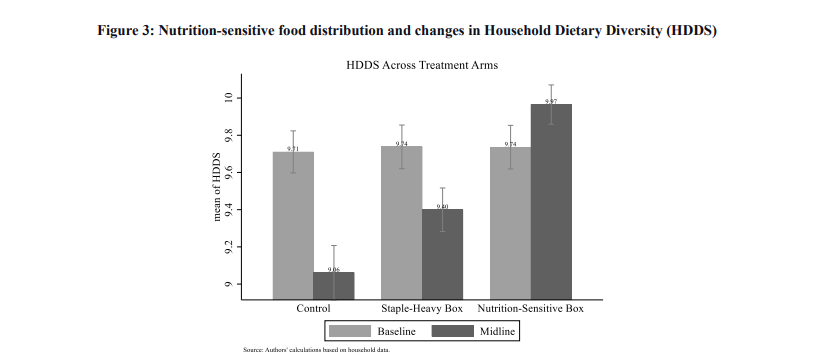Evidence from a Randomized Intervention in Egypt
Discussion Paper
By Kibrom A. Abay, Lina Abdelfattah, Mohamed Elkaramany, Dalia Elsabbagh, Sikandra Kurdi

We evaluate the impacts of a traditional food distribution and a nutrition-sensitive food distribution intervention in the context of a rapidly increasing inflationary pressure in Egypt. Besides evaluating the relative and absolute impacts of these interventions on household food and nutrition security, we also examine their impacts on households’ preferences for in-kind versus cash transfers. We implement a clustered randomized control trial through which we randomly assigned communities into: (i) “nutrition-sensitive” food box, (ii) traditional “staple-heavy” food box, and (iii) control group. We find that the nutrition-sensitive food distribution cushioned falls in dietary quality and food security of targeted households relative to the control group while the impact of the traditional and staple-heavy food distribution appears to be negligible. The nutrition-sensitive food boxes increased beneficiary households’ dietary diversity by about 9 percent while also increasing energy, protein, and iron intake by 12, 13, and 19 percent, respectively. We also find that experience with the food boxes increases households’ preference for in-kind transfers, more so among households experiencing high inflation rates and among those households not covered by other food and cash transfer programs. Receiving food boxes increases preference for in-kind transfer by about 9-11 percentage points. Our findings have important implications for the debate on the efficacy of alternative interventions to support poor households as food prices rise and the relative efficacy of in-kind and cash-transfers. The lack of effectiveness of the staple-heavy food boxes suggests that the design and content of in-kind transfers are crucial when considering this policy option, including compared to cash.
Click here to read the paper
Click here to browse publications
